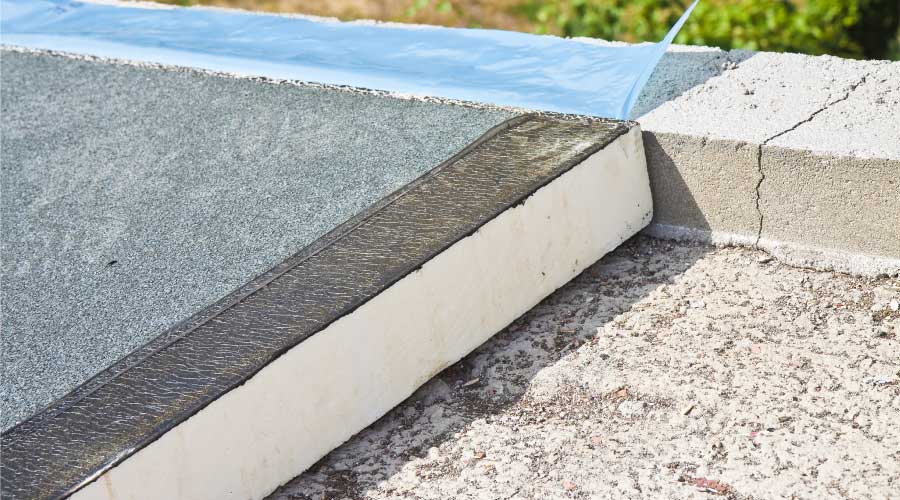Maintenance Plan, ‘Walk-Around’ Audits Can Help Restore Energy Efficiency
What can be done to restore a lagging building to its as—designed energy efficiency is a question that produces a surprising amount of agreement from a group of building experts. They prescribe relatively inexpensive improvements, including a good preventative maintenance plan and basic daytime/nighttime “walk—around” audits, that can help get a building’s energy performance back on the right track. The next stages, if necessary, are typically more involved in terms of both time and expense, including strategies like energy audits and full—scale recommissionings.
To establish a high—performance operation, Lembo cautions, the mandate has to come from on high. “Energy efficiency and environmental stewardship must be baked into the fabric of a company’s culture,” he says. “Otherwise it will not be considered important and capital will continually be deployed elsewhere instead of the operation of the building.”
How to Bring a Building Back
But assuming company culture is not an insurmountable problem, what operational steps can facility managers take to improve lagging energy performance? Here are some suggestions.
Establish a good preventive maintenance program, starting with filters, belts, and coils. “When I started in the field,” Skodowski recalls, “these were the two things my mentor told me: Make sure your filters and coils are clean and your belts are aligned and tensioned properly. You’ll lose 10 to 15 percent of your fan energy because your belts aren’t aligned or tensioned properly.”
If you want to go a step further, make sure your thermostats are properly calibrated, and check setpoints because of the tendency to overcool and overheat buildings to avoid occupant complaints.
Newman describes three levels of maintenance, with the lowest being the reactive approach: When something breaks, you fix it. The next level is preventive maintenance, which means you’re listening to your equipment, doing things like greasing bearings, checking filter gauges, and changing belts and filters. The highest level is predictive maintenance, where operators might, for example, respond to the manufacturer’s written instructions that say, “If you are in a dirty atmosphere, you should lubricate the bearings every six months.” This last, most rigorous level of maintenance provides a substantial savings to a building owner, according to Newman.
Western Michigan found it could shift to a greater amount of scheduled, preventive maintenance without affecting the number of personnel or budget, a change that any facility can make over time with focus and desire, Strazdas says. The school then made the next leap, directing a small group of its “crackerjack” people to focus full time on retro— and ongoing commissioning. A large organization does not necessarily have to look outside for such expertise, he adds; if there are a few really good technicians on board, they know what the problems and energy opportunities are.
Do simple daytime/nighttime audits. “Walk your building during the day and see what it’s doing during the day,” Skodowski recommends. “Where are lights on? What is the building doing? Is the building comfortable or not? Walk with a temperature sensor. Do the same thing at night when everyone is gone. Just get a basic feeling for what the occupancy in this building looks like during and after hours.” Do some walk—throughs on weekends, too, and when the seasons change, and when a major tenant has moved in or out.
Compare energy numbers. Say you’re in a typical multi—tenant office building. The building is nearly empty after hours — and yet your audit is finding that some 30 percent of your energy is being consumed after hours. That basic finding lets you start looking further, and you find, to use Skodowski’s example, that a big tenant is regularly leaving all of its personal computers, copying machines, and coffeemakers on.
“I recently had an owner who called and said, ‘I just did a $1 million lighting retrofit and my Energy Star rating dropped on this building. I don’t understand how that’s possible,’ ” Skodowski recalls. “We went out and did a daytime/nighttime audit on it. In the daytime, everything seemed normal. But at night, the entire building was lit up.
“They had changed janitorial supervision and now had a janitorial supervisor who decided he wanted all the lights left on until he walked each floor. It was all about him not wanting to have to find the light switches on the way in. He didn’t finish walking the floors until 2 a.m., so most of the building was left on until 2 a.m.”
Know your building inside and out, Lembo strongly advises. “Spend time with blueprints and specifications as well as in the physical plant to understand not only what is in the facility, but what the original intent of the operation was and if this is still the case. Spend time walking the facility every chance you get, especially after working hours, when some equipment is perceived to be turned off or operating in a reduced capacity. Determine if this is truly the case, and if it is not, you may find some excellent low—cost/no—cost opportunities to reduce consumption.”
Related Topics:














